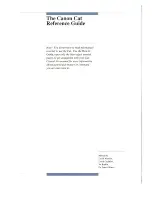
Power-on self-test (POST)
Each time you turn on your computer, it performs a series of tests that
check the basic operation of the base computer. This series of tests is called
the power-on self-test (POST).
POST does the following:
Checks basic system board operations
Checks the memory operation
Compares the current system configuration with that established by the
Configuration/Setup Utility program
Starts the video operation
Verifies that the diskette drives are working
Verifies that the hard disk drive and the CD-ROM drive are working
If Power-On Self-Test is set to Enhanced, numbers showing the amount of
memory being tested appear in the top-left corner of the screen until the
total amount of memory in the system is reached. Options for running a
quick POST or accessing the Configuration/Setup Utility program appear in
the lower-left corner of the screen. Quick mode is the default mode of
operation.
Note:
The amount of available memory shown might be somewhat less
than expected because of basic input/output system (BIOS)
shadowing in random access memory (RAM).
If POST finishes without detecting any problems, the first screen of your
operating system or application program appears if you have not set a
power-on password. If you have set a power-on password, a password
prompt appears. You must enter your password before the first screen of
your operating system or application program will appear. (For more
information on using passwords, see “Using a power-on password” on
page 42.)
If Power On Status is Enabled and POST detects no problems, you will hear
a single beep. If POST detects a problem, you will hear multiple beeps or
no beep. In most cases, an error code appears in the top left corner of the
screen, and in some cases a description of the error is displayed beside the
code. (Note that the screen will sometimes display multiple error codes and
descriptions.) For more information about what caused an error message to
appear and what action to take, see “POST error” on page 104 and
“Troubleshooting MAP” on page 101.
If you hear no beep at all during POST, see “Device troubleshooting charts”
on page 110. You might need to have your computer serviced.
100
PC 300PL and PC 300GL User Guide
Содержание PC 300GL Type 6563
Страница 1: ...PC 300PL User Guide Type 6565 PC 300GL User Guide Types 6563 6564 6574...
Страница 2: ......
Страница 3: ...PC 300PL User Guide Type 6565 PC 300GL User Guide Types 6563 6564 6574 IBM...
Страница 10: ...viii PC 300PL and PC 300GL User Guide...
Страница 18: ...xvi PC 300PL and PC 300GL User Guide...
Страница 20: ...Desktop model Tower model 2 PC 300PL and PC 300GL User Guide...
Страница 24: ...PC DOS 2000 SCO OpenServer 5 0 5 6 PC 300PL and PC 300GL User Guide...
Страница 38: ...20 PC 300PL and PC 300GL User Guide...
Страница 78: ...60 PC 300PL and PC 300GL User Guide...
Страница 90: ...4 Rotate the power supply toward the opened side slightly 72 PC 300PL and PC 300GL User Guide...
Страница 114: ...Desktop Tower 96 PC 300PL and PC 300GL User Guide...
Страница 189: ......
Страница 190: ...IBM Part Number 10K2713 Printed in U S A September 1999 1 K2713...
















































